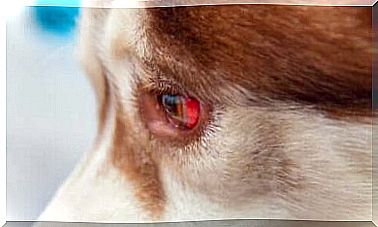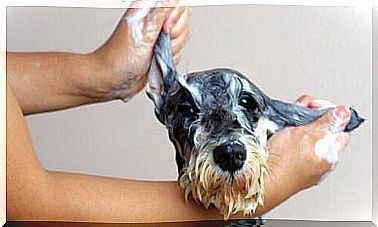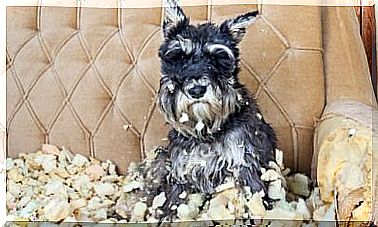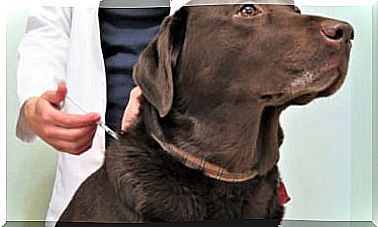How To Recognize The Symptoms Of Canine Parvo?

If you have a dog, you may have heard of this disease before. It is viral and very contagious: unfortunately, it has a high mortality rate. The symptoms of canine parvovirus are varied and can be detected in time to avoid causing the death of the affected animal.
To prevent this disease, it is important to always check the places that your four-legged friend frequents. In this article we will talk about how to recognize canine parvo , giving you important information on its infection and any treatments to be applied.
A deadly disease
Canine parvo, also known as CPV, is a viral disease that primarily affects the intestines of dogs of all breeds. Most importantly, it affects puppies, but can easily spread among adult specimens as well.
The virus affects the intestinal mucosa of the animal, from which it benefits for its rapid propagation and directly attacks the white blood cells (or leukocytes), which are essential for the immune system. Once their density decreases, two life-threatening variants of parvovirus can occur:
- Enteric : affects the enterocytes of the digestive tract, which causes an apparent common gastroenteritis. What actually happens is that the cells are forced to necrosis and, little by little, the disease ends up affecting the whole organism.
- Myocardial : it is a rare variant, which directly affects the heart cells of the animal.
Among the consequences of canine parvovirus, we find: sudden death, heart attack, dehydration due to vomiting or diarrhea and septicemia.
How does it spread?
Canine parvo is transmitted by direct contact with infected areas. The virus remains active in the faeces and urine of animals for a long period of time and can even be transmitted by indirect means.
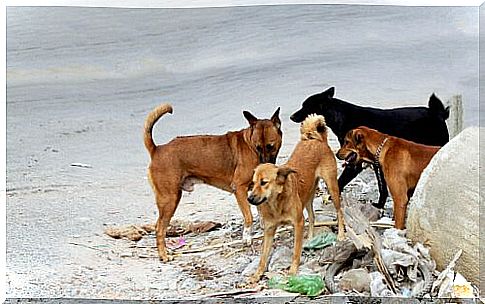
A person who has been in contact with one of these sites can transmit the disease, as it can survive on almost any surface.
For this reason it is advisable to keep clean the places where your dog spends the most time, always favoring proper hygiene. If one of the dogs in the neighborhood or park becomes ill with this virus, it exposes the entire population to the infection.
Also, special care should be taken in dirty or poorly sanitized areas, where rubbish is exposed to the outdoors. Flies, fleas, ticks and birds that feed on these remains can spread the virus just as effectively as a human.
The animal can be vaccinated against this disease, but this will not prevent it from spreading to the environment. In any case, the most advisable thing to avoid accidental propagation, we repeat, is to preserve your dog’s hygiene and always check the spaces and places where he plays, runs, rolls and snouts.
Symptoms of canine parvo
Detecting the symptoms of canine parvo can be a bit of a challenge at first, due to the main signs that are common to other diseases. Among them, the following are distinguished:
- Temperature.
- Diarrhea with traces of blood.
- He retched.
- Lack of appetite.
- Fatigue.
It is often confused with gastroenteritis due to similar symptoms, but the only way to be sure is to have a blood test to check your white blood cell levels. As mentioned above, the disease tends to weaken the individual’s immune system.
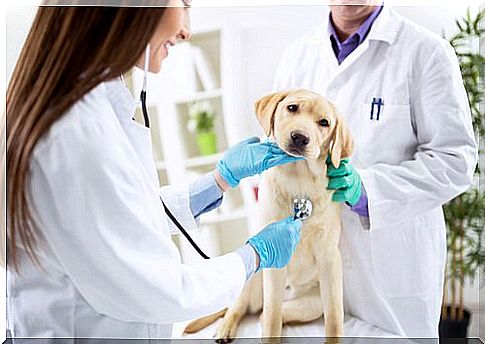
In any case, if you suspect the possible presence of canine parvovirus, it is best to immediately take the animal to the veterinary emergency room, where the doctor will be able to make an accurate diagnosis.
Treatments
If your vet confirms your doubts, immediate hospitalization is usually done to prevent other specimens from being accidentally infected. Antibiotics can be given in most cases, but they are not necessarily affecting the disease.
In this sense, since it is a viral disease, there is no 100% effective cure for all cases. It is best to attack the symptoms one by one so that the animal regains its strength and can overcome the disease thanks to the recovery of its immune system.
In any case, the ideal is to vaccinate your pet as a child before this terrible disease can occur, avoiding the anguish it can cause. Always remember to keep the home environments clean and sanitized and to exchange information with other owners in order to prevent the formation of possible foci of infection.

